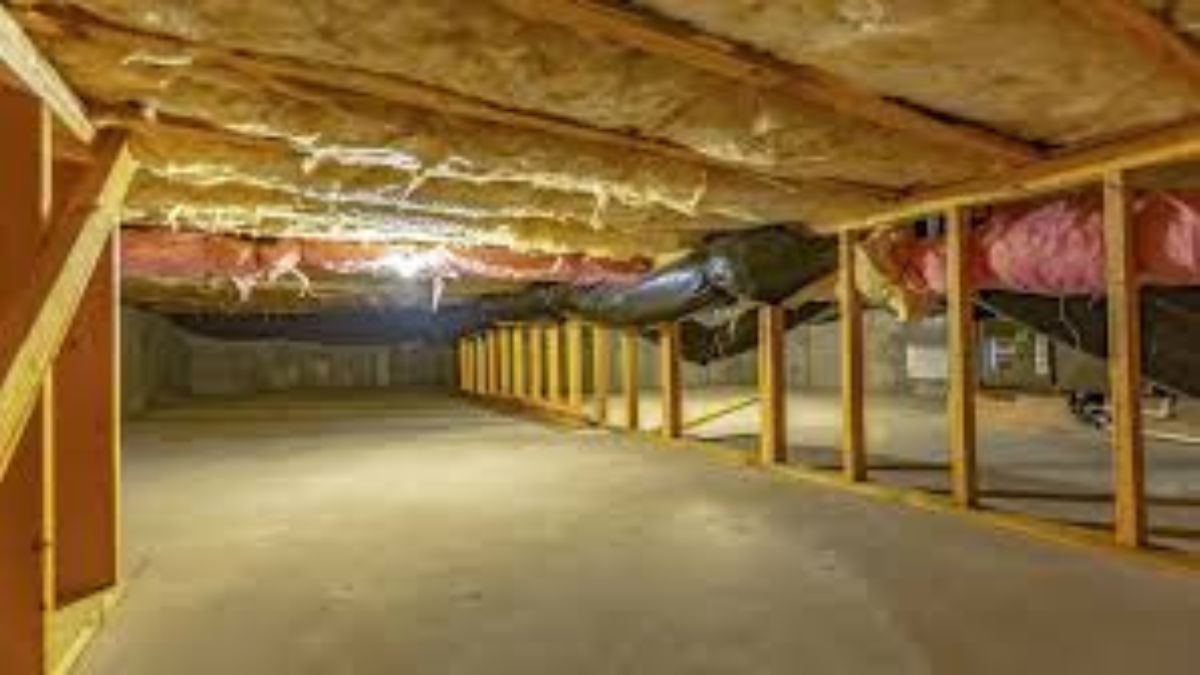Introduction to Crawl Space Maintenance
Crawl space maintenance is a critical aspect of home care that is often overlooked by homeowners. A properly maintained crawl space enhances your home’s structural integrity and significantly boosts energy efficiency. The role of moisture control in this context is paramount. Among the many issues that might arise from a damp crawl space are mold growth, rusting metal pipes, and decaying wood. Addressing these issues preemptively helps avoid expensive repairs and health issues, keeping your home safe and sound.
Moisture control is at the forefront of crawl space maintenance efforts. When excess moisture is left unchecked, it creates hospitable conditions for mold to grow, potentially leading to structural and health-related issues. Engaging in effective mold removal strategies early on ensures that mold does not take hold in these enclosed spaces and compromise the integrity of your property.
Causes of Moisture and Mold in Crawl Spaces
The presence of moisture in crawl spaces can be attributed to several culprits, each contributing uniquely to the problem. Poor drainage systems allow water to gather around the foundation, seeping into the crawl space. Additionally, leaks in plumbing can introduce significant amounts of moisture into the air. Inadequate ventilation further exacerbates the situation by trapping moist air, creating a humid environment conducive to mold proliferation. Understanding these causes helps homeowners take preventive actions to avoid the associated risks.
More specifically, drainpipes that are cracked or poorly aligned can lead to water pooling in areas it shouldn’t, while clogged gutters can overflow, directing water against the home’s foundation. Homes are increasingly vulnerable to these moisture problems as a result of climate change’s effects on weather patterns, which include more frequent and intense downpours. Prompt attention to such drainage and plumbing problems can save homeowners from the more severe consequences of unchecked moisture and mold growth.
Impact of Mold on Your Home and Health
Mold doesn’t just compromise the physical structure of your dwelling; it can also pose significant health threats. Structurally, mold can deteriorate wooden components, weaken foundations, and cause damage that may necessitate costly repairs. Health-wise, exposure to mold spores can trigger allergic reactions and respiratory problems. According to the CDC on mold, prolonged exposure can lead to more serious conditions such as asthma and reduced lung function, particularly in vulnerable populations such as children and the elderly.
The financial burden that results from mold damage further complicates things. Not only can the removal process be lengthy and expensive, but the ensuing repair of structural damage can also lead to unanticipated costs. You can avoid these possible problems and make sure your house is a safe and healthy place for everyone who lives there by taking proactive measures to control the moisture levels in your crawl area.
Effective Strategies for Moisture Control
Mold growth in your crawl space can be significantly decreased by implementing efficient moisture control techniques. Dehumidifiers are effective tools that can help keep moisture levels in check, particularly in wetter climates or seasons. Additionally, ensuring your home’s drainage systems are functioning correctly plays a vital role in keeping water away from the foundation. Using vapor barriers is another strategic measure, serving as a shield against moisture seeping up from the soil.
It’s also beneficial to regularly inspect your home’s gutters and downspouts, making sure they direct water far away from your home. Ensuring they’re clear of debris and properly attached can alleviate much of the pressure that water puts on the home’s structure. By combining these measures, homeowners can create a robust defense against moisture invasion.
Choosing the Right Materials for Your Crawl Space
Choosing the right materials for your crawl space is essential to keeping it dry and hygienic. Vapor barriers, essential for moisture control, prevent damp soil from transferring moisture into the crawl space. Pairing these with the right insulating materials helps maintain balanced temperatures and moisture levels. Consideration should also be given to eco-friendly options that offer durability and insulation while minimizing environmental impact.
The longevity and efficiency of these materials depend significantly on their quality and compatibility with your specific crawl space environment. Selecting durable materials may involve a higher upfront cost, but it provides long-term benefits by reducing the frequency of maintenance and replacement, ultimately contributing to a more sustainable and cost-effective solution for managing crawl space conditions.
Importance of Regular Inspections
Routine inspections are an integral component of effective crawl space maintenance. These inspections are crucial in identifying moisture issues early before they evolve into major problems requiring extensive repairs. Regularly checking for signs of water ingress, such as standing water, mildew, or musty smells, can serve as a crucial early warning system against potential mold threats. These inspections also afford homeowners the opportunity to monitor and maintain the efficacy of their moisture control systems continuously.
Incorporating professional assessments into your maintenance routine can provide further peace of mind. Experts can identify subtle signs of damage that might be overlooked, ensuring any potential threats are addressed promptly. This proactive approach ultimately safeguards your investment and maintains the safety of your living environment.
DIY Tips for a Mold-Free Crawl Space
Homeowners can take several steps independently to preserve their crawl space’s health. Regular cleaning to remove debris, assessing air circulation pathways, and checking for plumbing leaks are effective practices. When addressing existing mold, it’s critical to follow safe and effective methods. The EPA guide on mold remediation offers comprehensive guidelines on safe mold removal practices and can serve as a valuable resource for homeowners managing smaller infestations on their own.
Beyond mold removal, homeowners should consider adopting preventative measures such as installing moisture-absorbing products and ensuring that operational systems like sump pumps and ventilation fans function optimally. These efforts, combined with an awareness of potential problem areas, can enhance the longevity and health of the crawl space.

